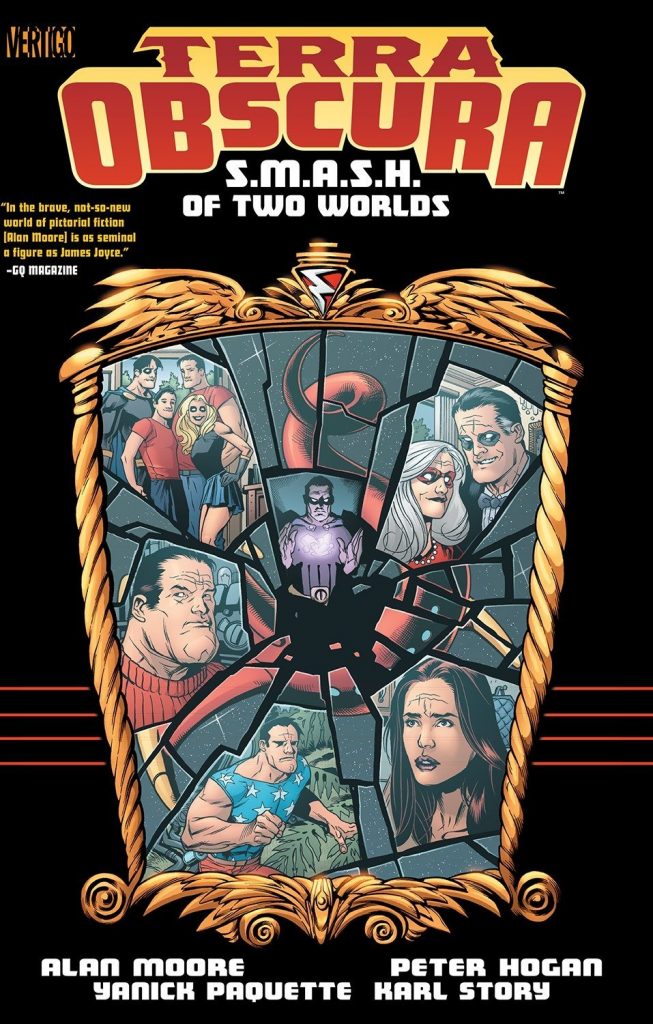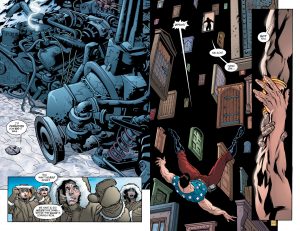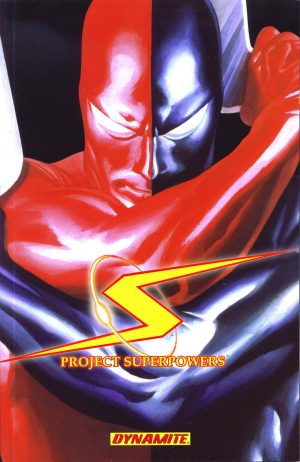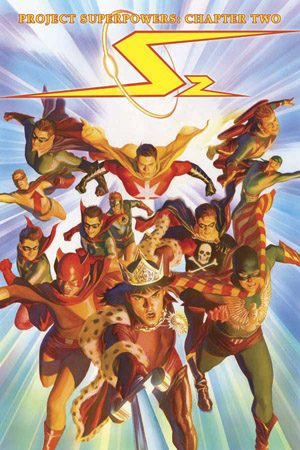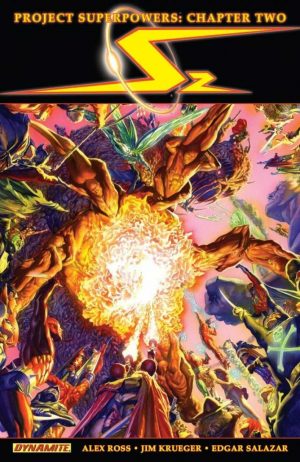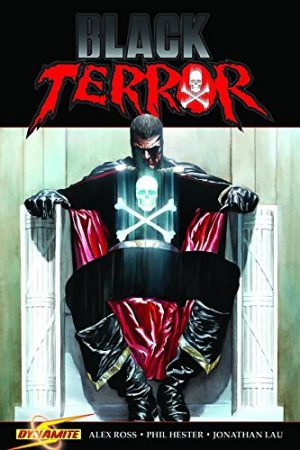Review by Frank Plowright
In 2001 Alan Moore revived a bunch of obscure 1940s superheroes, then long past any copyright issues, and fed them into a Tom Strong story. Their alternate world complete with Tom Strong counterpart Tom Strange was christened Terra Obscura, on the basis that it followed Earth’s orbit on the other side of the sun. It struck a chord, and resulted in two graphic novels featuring Tom Strange and those revived heroes.
Because the 1940s heroes were largely simplistic, Moore updated them and provided personalities. The Black Terror was no longer human, now a virtually generated presence that may have cut down his physical aggression, but enabled other forms of action reflecting his name. The Magnet’s powers have long since been reduced to an embarrassing attraction for small metal objects, and the Fighting Yank is now dead. For their two solo outings, Peter Hogan co-plotted and scripted the adventures of the Terra Obscura heroes.
Both are inventively constructed as puzzles that begin slowly and escalate into wonder, clever small ideas accumulating into something massive while we gradually come to know more and more of the cast. The opening story has a null zone spreading outward from a point in the Nevada desert and negating all science, while the second concerns both time slippages and the uncharacteristic behaviour of the Black Terror’s teenage assistant Tim. That enables a return to simpler times, but equally enables a greater darkness to contrast it.
Terra Obscura wouldn’t work without an extremely adaptable artist, and Yanick Paquette is that person. He’s called on to design a world looking enough like our own to be familiar, but equally contain anomalies to distinguish it, these apparent in the complete backgrounds. He’s at home with superhero action, but equally able to twist that into the unfamiliar of magical entities and alien threats. The flashbacks require Paquette to use a simpler style reflecting the 1940s, and the visual ideas supplied by Moore and Hogan require conceptual creativity, but it’s Paquette who had to draw the mechanics of a car in complete detail to enormous scale as seen in the sample pages. He does tend to pose women exploitatively, but to a small degree that feeds into the second story.
By virtue of an extended page-filling hallucinogenic sequence, and a somewhat fudged convenience toward the end, the second outing slightly drops behind the first. What’s nice about it, however, is that what’s evolved into a planet shattering threat is solved without violence.
When these stories were issued separately as volume one and volume two they didn’t feature the pages of background information supplied by Hogan and Paquette for the back of this collection. Read carefully, and you’ll discover they’ve slightly updated events.
